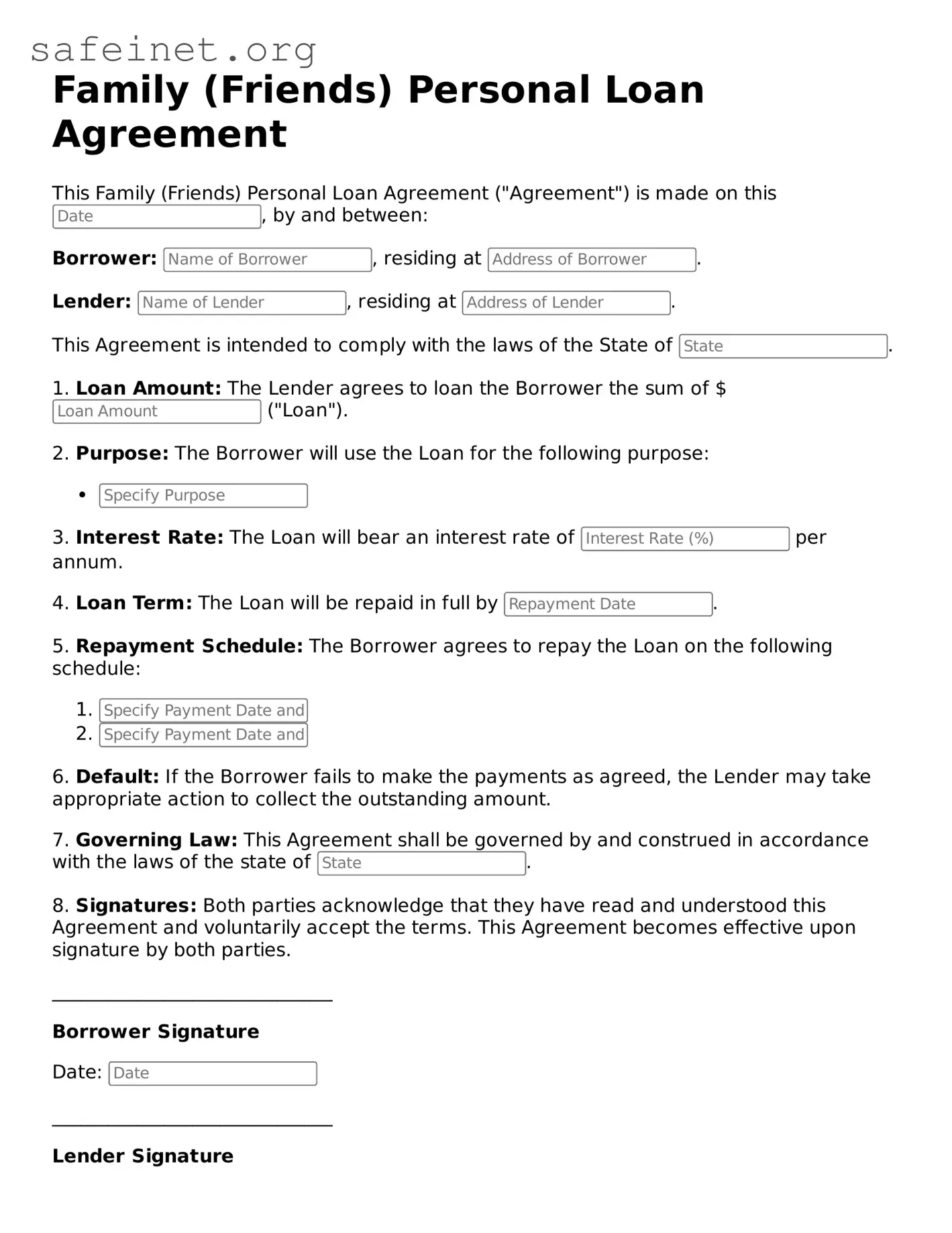The Family (Friends) Personal Loan Agreement form establishes the terms and conditions under which a loan is made between friends or family members. It shares similarities with a Personal Loan Agreement, which is typically used between strangers or formal institutions. Like the Family loan agreement, a Personal Loan Agreement outlines the amount borrowed, the interest rate (if applicable), and the repayment terms. However, the latter often includes stricter requirements for creditworthiness and may involve a greater level of formality and industry-standard language.
Another document similar to the Family (Friends) Personal Loan Agreement is the Promissory Note. This legal document serves to confirm the borrower's promise to repay the loan and includes similar basic components, such as the loan amount and interest. While a Promissory Note can be used in more formal lending scenarios, it often demands fewer details concerning collateral or conditions than a comprehensive loan agreement.
The Loan Agreement for Personal Use is also comparable. This document typically specifies the purpose of the loan and may include conditions or restrictions on how the borrowed funds can be utilized. Like the Family loan agreement, it establishes clear repayment schedules, but it may include additional legal protections for the lender, ensuring that the funds are utilized as intended.
In circumstances where the loan requires collateral, a Secured Loan Agreement becomes relevant. Similar to the Family (Friends) Personal Loan Agreement, this document details the amount of the loan and repayment terms, but it also specifies the assets being used as security. This added layer protects the lender if the borrower defaults on the loan, distinguishing it from an unsecured personal loan between family and friends.
A Co-Signer Agreement can also bear resemblance to the Family (Friends) Personal Loan Agreement. In situations where a lender requires a co-signer for security against failure to repay, this document is essential. Both agreements outline the responsibilities of each party, yet the Co-Signer Agreement adds another layer by incorporating the co-signer's liability, which can provide additional assurance to the lender.
Similar to the Family Loan Agreement is a Debt Acknowledgment Form. This simple document formalizes the existence of a debt but may lack the detailed terms of a fully fleshed-out loan agreement. While it verifies that a loan has taken place, essential factors like interest rates and repayment schedules may not be clearly defined, leaving both parties to negotiate those terms separately.
The Line of Credit Agreement functions in a manner akin to the Family (Friends) Personal Loan Agreement but with greater flexibility. While the Family loan agreement often involves a fixed amount, a Line of Credit Agreement allows the borrower to access funds up to a certain limit, on an as-needed basis. Both documents address repayment terms, but the Line of Credit Agreement often provides room for a revolving balance and interest accumulation.
Finally, the Installment Loan Agreement is a related document that specifies how payments will be structured over time. Much like the Family loan agreement, it outlines the total loan amount and interest. However, this type of agreement may place more emphasis on the amortization schedule, detailing how each payment affects the principal balance. Both agreements help maintain clarity regarding expectations, though the Installment Loan Agreement may include more standardized conditions applicable to formal lending.”
